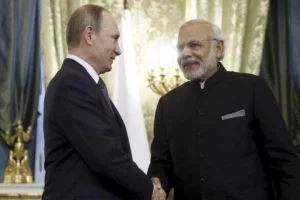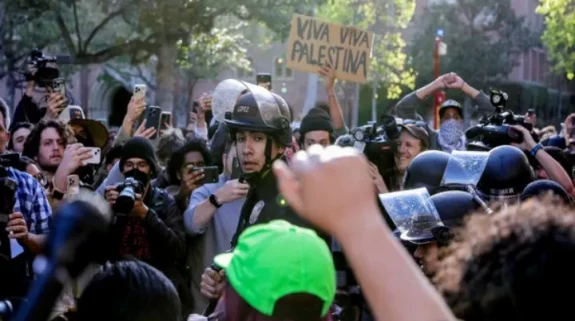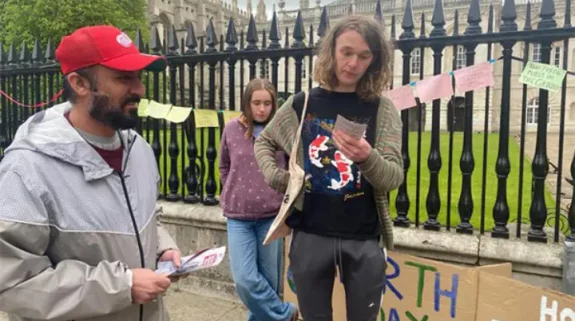On October 14, Russian President Vladimir Putin participated in the first-ever dialogue between Russia and the five Central Asian Republics (CARS) of Kazakhstan, Kyrgyzstan, Tajikistan, Turkmenistan, and Uzbekistan through the Russia – Central Asia Forum in Astana. Nothing unusual given that these are all former Soviet Republics and form part of Russia’s traditional and centuries-long sphere of influence, something that predates even the former Soviet Union. However, what is interesting is that this is the first ever Russia-Central Asia dialogue.
Dialogues with the CARS is the flavour of the season.
Earlier this year India convened a summit with heads of states of the CARS in a virtual format. As news broke of India’s plans, China hastily convened one. The US, European Union, and Japan all convened their own dialogues in this format. Yet, it took Russia this long to convene one.
Coming as it did immediately after the annual meeting of the Council of Heads of State of the Commonwealth of Independent States (CIS) of which all six are member states, does this signify a renewed Russian interest or diminished Russian influence in the region?
Commonwealth of Independent States (CIS) leaders in Kazakhstan summit create international organization to SUPPORT and PROMOTE Russian language, as well as signing PACKAGE of documents to DEEPEN cooperation between member states on issues of TERRORISM. pic.twitter.com/eBrCsmD8a6
— John Carter (@JohnEdgarCarter) October 14, 2022
That Russia may not have felt the need for holding a Russia-C5 dialogue may not be surprising. There are, after all, a number of other mechanisms and platforms where all parties get to interact and engage with each other. Prime amongst them, apart from the Commonwealth of Independent States (CIS) platform, are the military Moscow-led Collective Security Treaty Organisation (CSTO), and the economic Moscow-led Eurasian Economic Union.
Yet, Central Asia’s centrality to Moscow’s sphere of influence, and in particular the Putin-floated Greater Eurasian Partnership cannot be disputed.
With the breakup of the Soviet Union, the Baltic States, never quite acquiescing to the Soviet Union immediately moved away from Moscow. In the subsequent decades, Moscow’s influence in the South Caucasus also diminished, given the war with Georgia and Azerbaijan’s resource and financial independence. Armenia was the only republic solidly allied with Russia in the region. From 2014, Russia became alienated from fellow Slavic republic Ukraine with a full blown war taking place now. That leaves only the Central Asian Region allied with Moscow. Here too, from time to time states have flexed their muscle. For instance, Uzbekistan left the CSTO in 2012. Yet, economic and security dependence assured that this region remained within Russia’s strategic radar. From 2013, China began making inroads economically with its massive investments and trade opportunities for its Belt and Road Initiative (BRI).
Nevertheless, the Ukraine conflict has effected rethinking and thrown things in sharp relief. First, the conflict coincides with the CARS celebrating their 30 years of independence and sovereignty which makes greater autonomy and independence in domestic and foreign affairs inevitable. Second, when Kazakh President Kassym Jomart Tokayev spoke at the St. Petersburg Economic Forum about the sanctity and sovereignty of nation states alluding to their non-recognition of the independence of the Donetsk and Luhansk Regions, he spoke for the other CARS.
Territorial sovereignty is a sensitive issue for all the CARS, not only in relation to Russia, but also in terms of the region. Ever since the demise of the Soviet Union, the region has been marked by a series of border conflicts, from between Kazakhstan and Uzbekistan, (now settled), to the one ongoing between Kyrgyzstan and Tajikistan. Besides, of course, all the countries have sizeable Russian populations and some border Russia, and would wish to prevent any similar Russian military intervention against them, similar to the one in Ukraine or earlier in Georgia.
Third, while Russia remains the major economic partner and investor in most of the CARS, Western sanctions against it has spooked many of them, necessitating ways to bypass them. For instance, Kyrgyzstan, more economically dependent on Russia, has refused to use the Russian MIR cards, in a bid to hedge itself from Western wrath. Finally, and perhaps more importantly, Russia’s military distraction has meant a less effective CSTO. Even powerful states like Kazakhstan have felt the need to call in CSTO help when it was wracked by large scale domestic violence in the beginning of this year. But it also had to soon get the CSTO to remove its troops from Kazakh territory in deference to popular will. More recently in the conflict between Azerbaijan and Armenia, a CSTO member, the CSTO was nowhere to be seen. Similarly, a fierce conflict rages on between Kyrgystan and Tajikistan, on the border with the CSTO playing almost no role. With the Taliban back in Afghanistan, and insurgency, alleged to be backed by “foreign forces” rearing its head in a number of states this year alone in the region, the security alliance matters more than ever to the region. It is here that Russia has felt the need to reassure the region of its support.
This is where the dialogue between Russia and the CARS assumes salience. In spite of the discomfort felt with the Russia-Ukraine conflict, Russia still remains central to both security and the economy in the region. Russia remains the leading investor in the Central Asian economies, with direct investment amounting to almost US$5 billion. Not only have Russia’s trade with these countries doubled in the last five years, reaching US$37.1 billion, but have actually increased this year by another 16 per cent, that is after the beginning of the Ukraine war. Even Kazakhstan, whose president has been most outspoken, has seen its bilateral trade with Russia increase since the commencement of the Ukraine conflict to $12 billion, an increase of almost 30 per cent from 2021; it uses Russian territory for access to the Arctic Sea and the Northern Sea Passage, which is important for this landlocked country, and Russian pipelines to transport its oil.
In fact, the conflict has helped increase the turnover of the CARS with its Western partners with a lot of re-export to Russia, hit by the sanctions. Further, countries like Kyrgystan, Tajikistan, and Uzbekistan have sizeable populations living and working in Russia, sending back remittances which make significant contributions to the economies of their home countries. While Ukraine has led to a number of such migrants returning because of curtailed employment opportunities they still remain a potent source of income. Given all this, and the Western boycott of Russia, it may have been prompted to renew its interest in a region it has long held as its own.
In his speech to the forum Putin outlined this: “Russia’s reorientation of exports and imports is stimulating the development of transport corridors throughout the Greater Eurasia region. The key task is to develop new trans-Eurasian corridors passing through the territories of your countries: East-West, North-South and Europe-Western China. The introduction of information technologies and the use of artificial intelligence, as well as the development of border checkpoints for the seamless transportation of goods and cargo can significantly accelerate cargo flows.”. With the region being so central to the Greater Eurasian Partnership, Russia may now be directing more investments – earlier directed to the West – towards the region.
Security is another aspect that Russia has had to reassure its Central Asian partners in. That was the basis for a trilateral dialogue between Putin and his Kyrgyz and Tajik counterparts Sadyr Japarov and Emamoli Rahmon respectively, where the border conflict between Kyrgyzstan and Tajikistan and ways to settle it were discussed. Another area that Putin reminded his Central Asian counterparts about Russia’s centrality in preserving the region’s security was Afghanistan. “A hotbed of tensions is indeed smouldering on our southern borders with the potential to unleash waves of refugees, terrorist threats and the spread of extremist ideology. In the process, Western secret services, primarily American and British, are cultivating units that are opposing the Taliban, pointing them in the direction of the border areas of some of our countries to shell,” Putin underscored in his speech. Rationalising Russia’s recent outreach to the Taliban promising financial and energy aid, Putin promised to shore up collective security for the region, implying Western interference and raising the spectre of yet another civil war in that country. The security promise was renewed by the Director of Russia’s Foreign Ministry’s Department for New Challenges and Threats Vladimir Tarabrin at a high level conference on terrorism in Dushanbe yesterday.
What does all of this point to – a diminished Russian role in the region or a lack of Russian interest there? Or a possibility that one may have fed into the other? Whatever the probability, one thing is sure. Even a diminished Russian role does not take away from the fact that the destinies of the CARS and Russia remain deeply intertwined with each other, and will continue to be so in the foreseeable future. And a hitherto West-centric Russia may rediscover anew the opportunities abounding in its near abroad.
Also read: Jaishankar’s Egypt visit reflects farsightedness of India’s ‘Look West’ policy




















